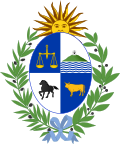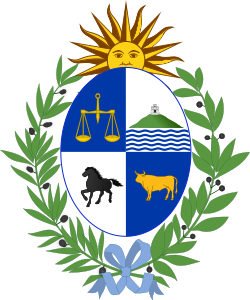This article needs to be updated.(February 2025) |
General Assembly of Uruguay Asamblea General de Uruguay | |
|---|---|
| 50th Legislature of the Chamber of Senators 50th Legislature of the Chamber of Deputies | |
 | |
| Type | |
| Type | |
| Houses | Chamber of Senators Chamber of Deputies |
| Leadership | |
| Structure | |
| Seats | 129 members 99 deputies 30 senators |
 | |
Senate political groups | Government (16)
Opposition (14)
|
 | |
Chamber of Representatives political groups | Government (48)
Opposition (51)
|
| Elections | |
| Proportional representation | |
| Proportional representation with Localized list | |
Last Senate election | 27 October 2024 |
Last Chamber of Representatives election | 27 October 2024 |
| Meeting place | |
 | |
| Palacio Legislativo, Montevideo | |
| Website | |
| www | |
 |
|---|
The General Assembly of Uruguay (Spanish : Asamblea General de Uruguay) is the bicameral legislature of the government of Uruguay, and consists of two chambers: the Chamber of Senators and the Chamber of Representatives. General Assembly has 130 voting members: 99 representatives and 30 senators, the Vice President of the Republic, who serves as President of the General Assembly, and the Senate has the right to vote. The legislature meets in the Legislative Palace in Montevideo. Both senators and representatives are chosen through proportional representation for five-year terms. [1]
Contents
- History
- Attributes
- Latest elections
- Library of the Legislative Power
- Gallery
- See also
- References
- External links
The General Assembly holds its sessions in the Chamber of Representatives of the Legislative Palace. During the 19th century, the legislature met in the Montevideo Cabildo.






